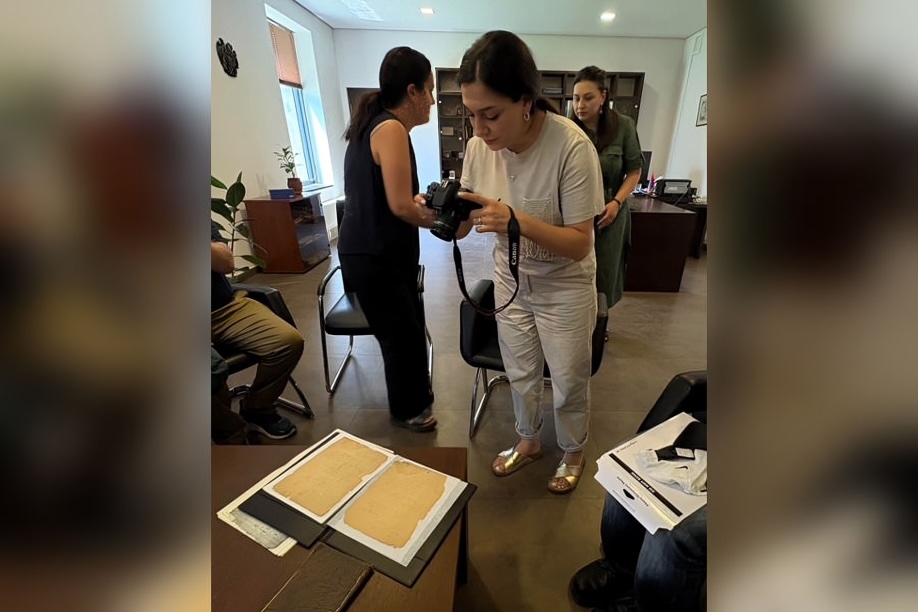After the Armenian Genocide of 1915 and decades of Turkey’s denialist policies, there were simply no diplomatic relations between Armenia and Turkey. Since the first Nagorno-Karabakh war in 1988, the borders have remained closed. The second Nagorno-Karabakh war in 2020, which resulted in the ethnic cleansing of tens of thousands of Armenians from the region, yet again proved Turkey’s continued pursuit of the same policies it carried out in 1915.
Nevertheless, Prime Minister Nikol Pashinyan sought to take a radical step in 2022 and launch a normalization process with Armenia’s “neighbor.”
The “normalization” process was announced with cautious optimism. After decades of closed borders and hostile rhetoric, there was hope that diplomacy might break the cycle and open a path to dialogue, trade and perhaps even reconciliation. Turkey’s stated motivation was pragmatic: to position itself as a regional powerbroker, unlock economic opportunities and respond to international pressure for stability in the South Caucasus.
Advertisement
But as the process unfolded, it became clear that Ankara was not seeking genuine reconciliation. Instead,
Turkey repeatedly reached for the same playbook it has always used against its rivals — using symbols to assert dominance and provoke.
This tactic can also be observed in the example of Hagia Sophia. There are nearly 90,000 mosques in Turkey, many of them half-empty. Clearly, people did not need another one. Yet the ancient Greek church was converted into a mosque. It was a purely symbolic act — and one that we see mirrored in Turkey’s approach to the Armenian case.
The first provocation seemed relatively “harmless” — Müsavat Dervişoğlu, chairman of the nationalist IYI (Good) Party, proposed renaming the Turkey-Armenia border crossing as the “Talat Pasha Border Gate.” In his speech, he praised Talat Pasha, the Ottoman interior minister who orchestrated the Armenian Genocide:
“History is not merely a record of past events; it is also the legacy of great struggles, great leaders and great ideas that shape a nation’s identity, keep its memory alive and are passed on to future generations. Keeping this legacy alive is not only the duty of statecraft, but also a fundamental responsibility of the national conscience.
In line with this responsibility, the renaming of one of our key border gates, the Alican Border Gate, as the “Talat Pasha Border Gate” will be a concrete manifestation of our determination to honor our history, our struggle for independence and our national memory.
Talat Pasha is one of the pioneering figures who shouldered the responsibilities of the State at the most critical junctures of the Turkish nation’s fate, and who helped revive the consciousness of a nation beneath the ruins of an empire. Serving as Grand Vizier during the final period of the Ottoman Empire, he was not only a political leader but also one of the architects of the nation’s struggle for existence and survival.”
This proposal came right in the middle of the “normalization process” and shortly after Pashinyan’s visit to Turkey. To Armenians, naming the border after Talat Pasha — the chief architect of the Genocide — was not a gesture of friendship. It was an act of erasure and humiliation.
Just a week later, another provocation followed — this one even larger: Ani Cathedral. The ancient Armenian capital of Ani has been abandoned since the 17th century and is used primarily as a tourist site. The city is called the “City of 1,001 Churches,” with at least 40 surviving churches, chapels and mausoleums designed by some of the greatest architectural and artistic minds of their time. A symbolic Armenian city without inhabitants. Yet, alleged reports began circulating that Turkey planned to convert Ani Cathedral into a mosque.
The pro-government newspaper Sabah presented this alleged move as something positive, publishing: “Türkiye restores Anatolia’s first conquest mosque at Ani ruins.” While an interrogation of the reports has not produced any “official” move to designate Ani Cathedral as a mosque, the aforementioned inflammatory provocations, whether from officials or Turkish newspapers, are heightening fears and outrage among Armenians.
Turkish outlets refer to Ani Cathedral as “conquest mosque,” in reference to Seljuk Sultan Alp Arslan, who in 1064 used the site to hold Friday prayer. Although there seems to be no move to designate Ani as an “official mosque,” even the use of the phrase, no matter how some may argue that it is a “historical designation” for Turks, is deepening fears.
Let’s be clear: there is no such thing as a “conquest mosque.” What really happened was this: an invading power seized a region, took over its sacred sites and improperly utilized them. Historically, Turkey has not preserved history — it has often selectively rewritten it by erasing its Christian past.
The timing of these reports and rumors was not random. Regardless of whether the reports were “official,” it remains that
Turkish media prodded the wounds of genocide, and the message is unmistakable — Armenian cultural heritage can be appropriated, rebranded and used as a tool of intimidation.
Even in daily life, the normalization process has been shadowed by acts of hostility. In one Armenian neighborhood of Constantinople, there were reports of graffiti that appeared declaring: “One Talat goes, a thousand Talats come.” The message was chilling: the ideology that produced the genocide is alive and unrepentant.
Taken together, these moves show a pattern. Rather than creating an environment of trust and mutual respect, Turkey has used symbols of domination to remind Armenians of their vulnerability. The language of “normalization” becomes a cover for projecting strength while avoiding any responsibility for past or present wrongs.
This leaves Armenians with a sobering question: can a genuine peace be forged with a state that continues to weaponize history and culture against them? Can you truly dance with the devil?
Advertisement





